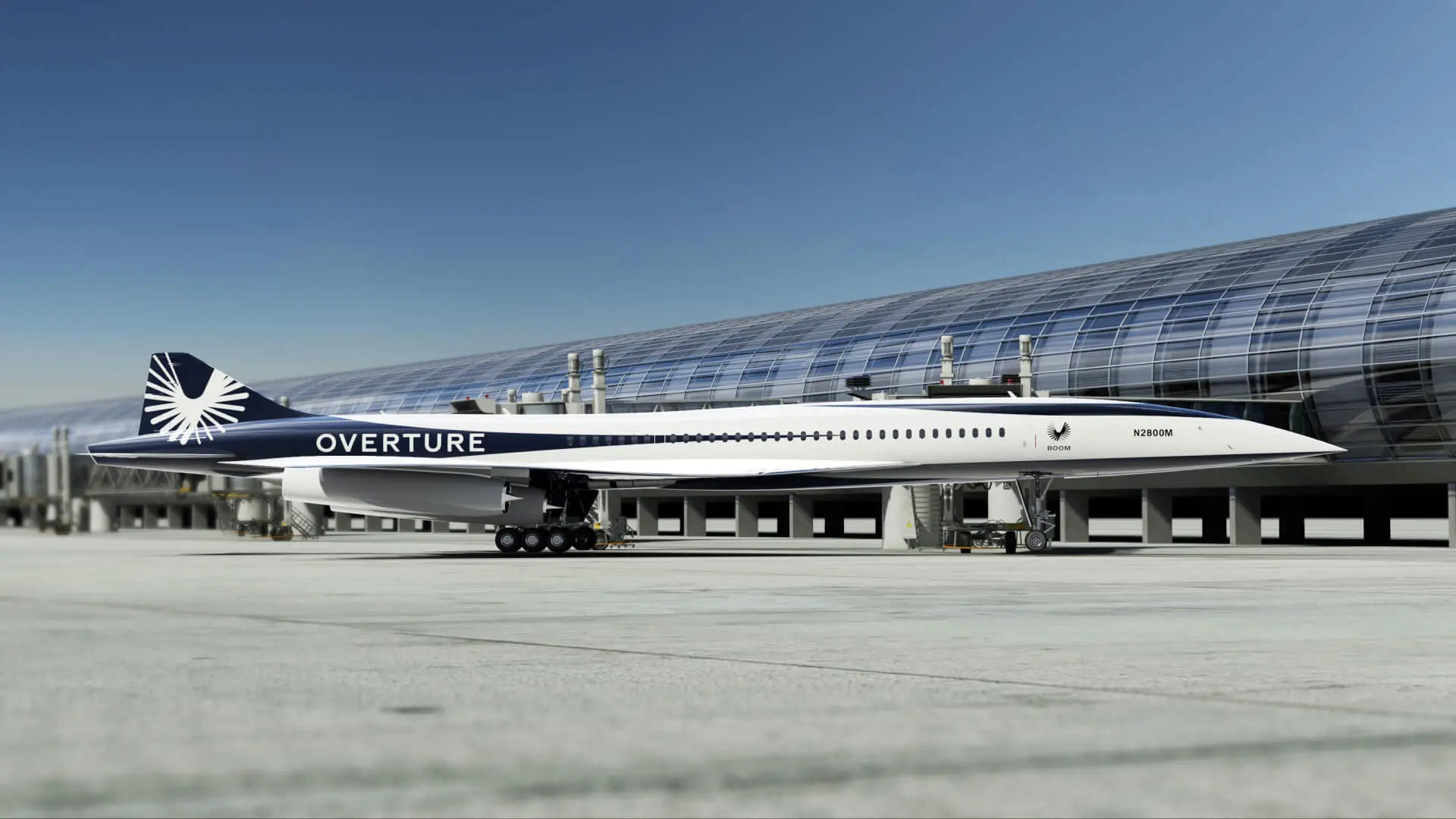Boom Aerospace, an American company founded in 2014 in Denver, Colorado, is poised to make a significant mark in the aviation industry by introducing Overture, a supersonic passenger plane aimed at succeeding the iconic Concorde, two decades after its commercial retirement.
Table des matières
Overture is gearing up for its maiden flight as the first quarter of 2024 approaches
The XB-1, a technological demonstrator, will take to the skies to validate the performance of the Symphony engine and the aerodynamic behavior of the aircraft. Boom Aerospace has been meticulously fine-tuning every aspect of the project, including runway tests and engine trials, under the watchful eye of the Federal Aviation Administration (FAA), which granted XB-1 its airworthiness certificate following a successful ground testing campaign.
The Overture project is accelerating towards its ultimate goal, which includes commencing mass production in a new facility in Greensboro, North Carolina, by 2025 and obtaining Overture’s certification in 2029 to usher it into commercial service.
In pursuit of this ambitious endeavor, Boom Aerospace has enlisted the expertise of key players in the aerospace industry. The latest addition to their roster is Honeywell, a global leader in cockpit technology and avionics, alongside French company Thales. Honeywell will supply Boom with its state-of-the-art integrated cockpit, « Anthem, » and a next-generation modular avionics platform.
Previously, Boom had secured subcontracting agreements with Italian manufacturer Leonardo for the fuselage, Aernnova for the wings, and Aciturri for the empennage.
Additionally, a partnership with French firm Latécoère was established for the wiring components.
American companies Eaton, Collins, and GE, along with French corporation Safran via its subsidiary Landing Systems, are also contributing to the Overture project.
After the withdrawal of Rolls-Royce, Boom turned to FTT, a subsidiary of Kratos Defense & Security, which had previously worked on the engines of American fighter jets such as the F-22 and F-35, to develop the Symphony propulsion system.
Overture will be the first commercial aircraft to be ‘carbon-neutral’
Despite some skepticism, Boom’s vision is gradually taking shape with a promise to usher in a new era of air travel, one where commercial airliners fly at supersonic speeds, specifically at Mach 1.7 (2099 kilometers per hour), powered by sustainable aviation fuels (SAF).
Blake Scholl, CEO and co-founder of Boom, confidently states, « Overture will be the first commercial aircraft to be ‘carbon-neutral’ from day one, capable of flying with 100% SAF at twice the speed of today’s fastest airliners. » While some experts have raised concerns about non-fossil SAF suitability for supersonic flights and the potential environmental impact of increased condensation trails, Boom continues to address these challenges. Additionally, mitigating the sonic boom when breaking the sound barrier remains a priority.
Overture, often referred to as a « mini Concorde, » is designed to accommodate 65 to 80 passengers and serve approximately 600 destinations.
It holds 90 orders, primarily in the form of purchase intentions, from three major airlines: American Airlines (20 aircraft), United Airlines (15 units with an option for an additional 35), and Japan Airlines (20 Overture planes).
The History of the Concorde
The Concorde, an iconic supersonic passenger jet, was a collaborative project between British Aircraft Corporation (BAC) and Aérospatiale, a French aerospace manufacturer. It made its first flight on March 2, 1969, and entered commercial service in 1976.
The Concorde was renowned for its incredible speed, capable of cruising at Mach 2.04 (around 1,354 miles per hour), which allowed it to complete transatlantic flights in just over three hours.
Key figures associated with the Concorde:
- Maximum Speed: Mach 2.04 (1,354 miles per hour)
- Passenger Capacity: Typically 100 passengers
- Range: Approximately 4,000 miles
- First Commercial Flight: January 21, 1976
- Retirement: The last Concorde flight occurred on October 24, 2003.
Despite its speed and luxury, the Concorde faced challenges, including high operating costs and concerns about sonic booms. These factors, combined with the tragic crash of Air France Flight 4590 in 2000, led to its retirement in 2003. Nevertheless, the Concorde remains a symbol of innovation and a testament to mankind’s ability to push the boundaries of aviation technology.

